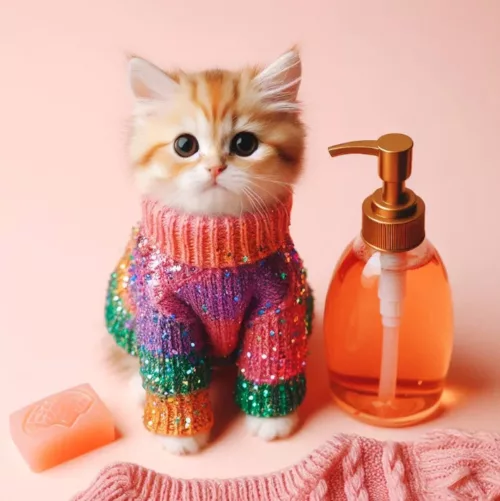Knitted fabrics come in all shapes, sizes, and fibers, each bringing its own personality to the table. You’ve got your natural fibers like wool and cotton that are breathable and hold dye beautifully. On the flip side, synthetic fibers like acrylic and polyester offer durability and sometimes even mimic the feel of natural fibers but with a bit of an edge on moisture-wicking abilities.
Now, what really gets people is how different these yarns can react when they meet water and detergents. Think of wool as that delicate friend who needs gentle handling. It might shrink or even felt into a totally new shape if not treated right. Meanwhile, most synthetic fibers are more relaxed about getting a wash, though you gotta watch out for pilling.
The key to unraveling the mystery of each knitted item lies in the care label. These little tags are like treasure maps, offering clues on how best to pamper your knits. They’ll tell you if your beloved sweater can handle a spin in the washer or if it’s screaming for a hand wash instead. So, don’t just rip out your labels without giving them a good read first!
Pre-Treatment Tips for Maintaining Knitted Items
When you’ve got an unfortunate stain on your hands, it’s like a race against time. Knitted items require a bit of finesse before you even start thinking about washing. The golden rule here is patience and subtlety, especially if you’re dealing with natural fibers that can be as sensitive as they are stunning.
To tackle stains, it’s all about gentle persuasion. Spot cleaning is your best friend, using a mix of water and mild soap to coax the stain out rather than scrubbing it blindly, which just makes the fiber miserable. Dab-don’t-rub is your new mantra. This approach keeps fabric integrity intact and reduces the risk of the stain spreading.
Most people think heavy-duty stain removers are a safe bet, but not with knits. These fighters are just too aggressive for our delicate friends, often leading to color bleeding or fibers weakening. Nature knows best, so stick with solutions that are specific to your fabric type – natural or synthetic gets different treatment.
Pre-treatment doesn’t mean making your whole life about stain battles, though! A quick pre-wash inspection can nip potential disasters in the bud and keeps you in control of your knitted life’s state.
Effective Washing Techniques for Knitted Delicacies
Choosing the right washing method for your knitted treasures can make all the difference. Hand washing is often your best bet for those intricate, delicate pieces. It gives you full control over the process, letting you handle each knit with care. Just fill up a basin with lukewarm water, add a dash of mild detergent, and let those fibers soak gently before giving them a soft touch massage.
But hey, not all knits need the personal touch of hand washing. Some are cool enough for a gentle cycle in the machine. Just make sure to use a mesh laundry bag so those yarny bits don’t get pulled apart by the machine’s wild spinning. It acts like a safe haven, protecting each loop and twist.
Water temperature is another biggie to think about. Hot water can shrink and distort even the hardiest of fibers, so best to keep it cool or lukewarm. This preserves your sweater’s original form without it throwing a tantrum and changing size.
Detergents are the secret sauce to wash success. The mild ones – those fancy wool washes or baby shampoos – tend to cuddle up nicely with knits. They clean without stripping away all that makes your fabric fabulous, keeping colors vibrant and fibers soft. Choosing the right sud can mean the difference between a cozy pullover and a scratchy mess.
Drying Essentials to Prolong the Lifespan of Knits
Once those knit pieces are washed and ready, drying them right is key to keeping them in top shape. Air drying is the go-to move here. Forget about hanging them up on a line; you don’t want gravity pulling them out of shape. Instead, lay them out flat on a clean towel or drying rack and just let time do its thing.
Patience pays off when you keep your knits away from direct heat sources like radiators or bright sunlight. These can be just as harsh as a tumble-dryer if not more, really sapping the life out of your precious yarns. You want a nice, shady spot where air can circulate freely around your garment.
Getting your knit’s shape back after washing is like doing a little magic trick. Boost its looks by gently reshaping with hands, pulling a bit here, tucking a bit there, to coax it back to its original silhouette while it’s still wet. This ‘blocking’ method works wonders especially for pieces like sweaters and shawls.
So, skip the tumble dryer temptation even though it promises quick results, because all it delivers are shrunken, misshapen disasters. By embracing air drying, you not only extend the lifespan of your knitted items but also preserve their comfort and beauty without a sweat.
Storing Your Knitted Fashions for Longevity
Storing your knitted gems the right way ensures they look fresh and fab for years. Here’s the thing: folding them up is the way to go. Hanging is a no-no for knit items because gravity can stretch them out and leave you with saggy shoulders – not the look anyone’s going for.
When it comes to keeping those pesky moths away, nothing beats a bit of natural armor. Toss in some cedar blocks or lavender sachets into your drawer or storage area. These not only keep the little buggers at bay but also leave your clothes smelling dreamy. Win-win!
Choosing where to store them is another piece of the puzzle. A breathable container is your best bet. Those plastic bins might trap moisture, leading to damp and mold – sworn enemies of knitwear. Instead, try cotton storage bags, which let your fabrics breathe and stay fresh.
If space allows, giving each piece its own spot avoids them tangling up with each other. Neat stacks are great, so only what’s necessary is on top. This setup prevents unnecessary creasing and ensures easy access to your favorite piece without rummaging through and disrupting the whole stack.
To top it off, a quick visual check now and then for any signs of wear or pests keeps your collection in pristine condition. With a touch of care in how you store your knitted pieces, you wrap up your efforts in maintaining them with a flourish.

